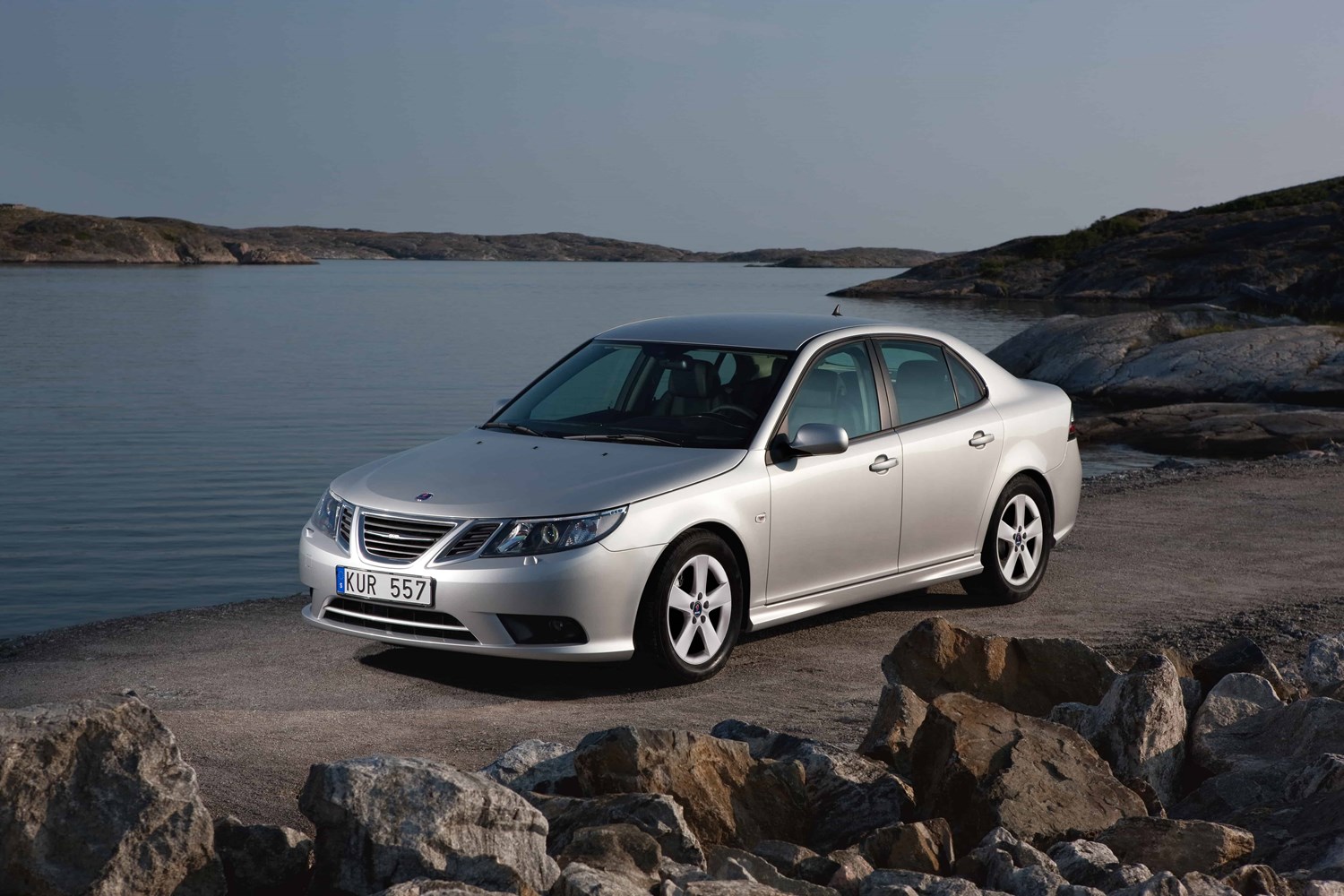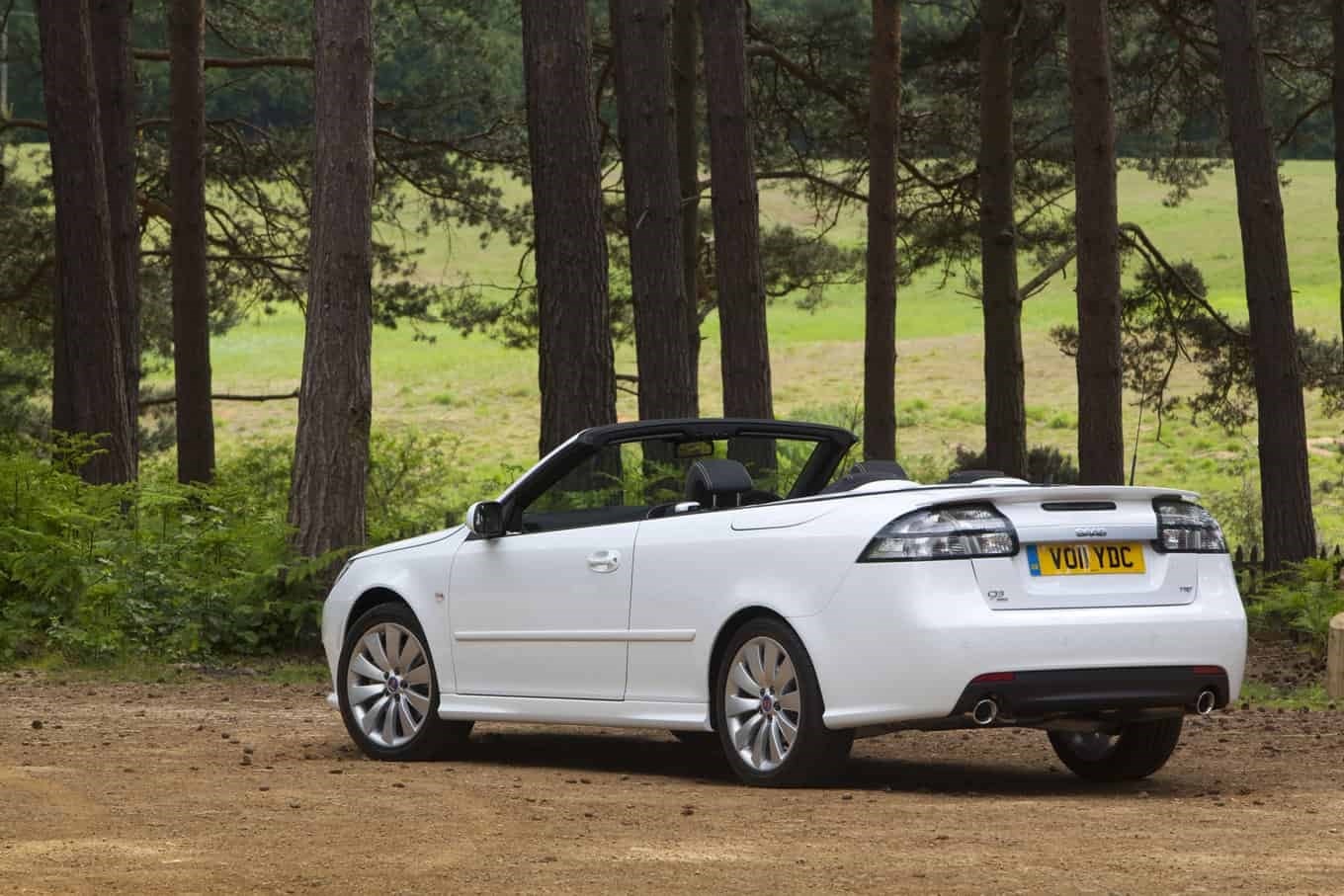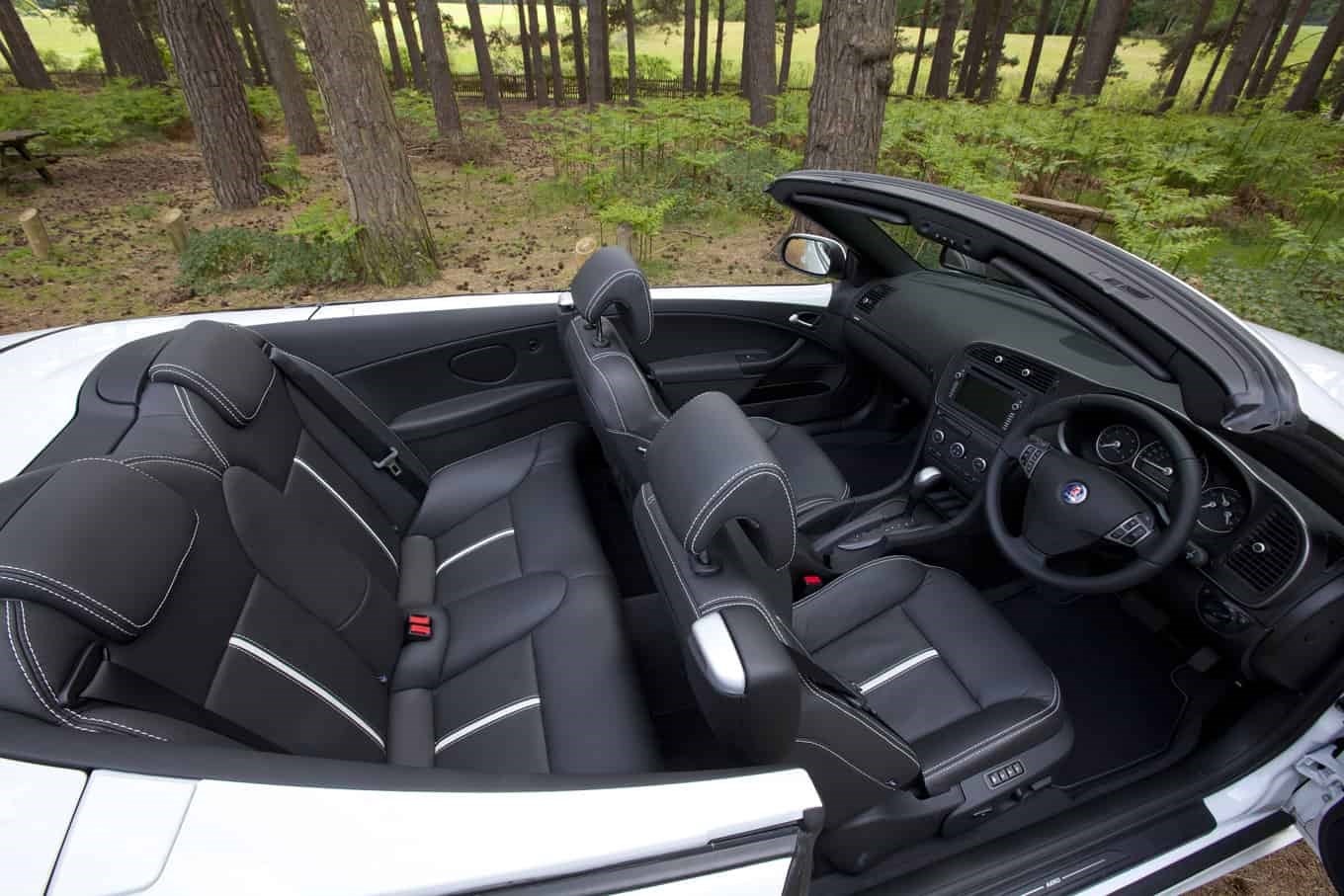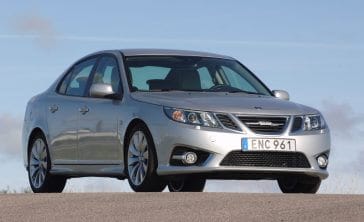Model review
The Saab 9-3 debuted in 1998 as a replacement for the 900. In reality, it was little more than an update to the outgoing 900 model.
This version of the 9-3 only persevered for four years before the second and final generation arrived in 2002.
Over the years, this model was sold as an estate – or SportWagon – an off-road ‘X’ version and as a convertible.
Current model
The second-generation car lived a much longer life, receiving a facelift in 2008, and then soldiering on until 2014, when Saab finally went bust after being sold by General Motors, to Dutch supercar firm Spyker, and latterly to a holding firm called National Electric Vehicle Sweden, all within the space of three years.
The engine range was also updated, with the most notable unit being a 2.8-litre, turbocharged V6, which could also be paired with an all-wheel drive system.
While the car was – to put it gently – rather dated upon its eventual fade from existence along with the brand that birthed it. However, there is a cult following for Saab as a whole, as well as the 9-3, and some dealerships even remain as Saab specialists today, meaning that the support network for the car is surprisingly strong.
Value for money
Interestingly, both the first and second-generation models start at roughly £600 for cars with well over 100,000 miles on the clock, of a relatively poor condition.
First-generation models in good condition tend to be worth over £2,000. Surprisingly, we even found a nearly-new on the market with just 2,800 miles on the clock, and despite sporting some aftermarket parts, it was listed at just shy of £20,000 – whether that asking price is too high for even the Saab diehards remains to be seen.
The second-generation, pre-facelift Saab 9-3 can be found with less than 80,000 miles on the clock for roughly £2,000. That is a figure that can easily double for a car in good condition.
Meanwhile, examples of the face-lifted car start at £1,500 for an example with close to 100,000 miles on the clock, though a majority of the cars in a decent spec are typically over £2,500.
Sub-50k milers start somewhere around the £4,000 mile mark, and the last UK cars from 2011 and 2012 tend to go for about £6,000 if they are in good condition.
Looks and image
The Saab is styled relatively conservatively, in-line with all of its junior saloon rivals of the time.
And, while it was relatively on-par when it debuted in 2002, the 9-3 had definitely lost track of its competition by the end of its run, despite the update of 2008.
The interior could best be described as ‘knocky’, with cheap dashboard materials that take away from the premium feel it was aiming to achieve against the might of its largely German competition.
Behind the wheel, the comfort of the 9-3 is striking. The seats are a noted strong point in almost every published review of the car, and a softly sprung, supple ride means it is ideal for long-distance drives.
Its engines perform well, and while the diesels can be a little bit rough under acceleration, the high-spec petrol units are sublimely smooth.
And, particularly if you can track down the all-wheel drive, 276bhp version of this car, it can be something of a ‘sleeper’; that is to say, it’s capable of some proper performance, in spite of a relatively sedate look.
Sadly, driving the 9-3 isn’t as precise or rewarding of an experience as its primary rivals, but it’s perfectly acceptable for every day, and it does of course stand out from the German monotony in the saloon market.
Space and practicality
The Saab 9-3 was never a class-leader when it came to boot space, with 425 litres of boot space. This doesn’t lag too far off the go-to executive saloons such as the BMW 3 Series and Audi A4 of this era. It also surpasses some of the non-German alternatives of its day, such as the Alfa Romeo 159 and Volvo S60.
The interior space offering is good, though, with plenty of headroom for all. Rear legroom is slightly more sparing, particularly if the front-seat occupants are tall. However, it is able to seat five, though we’d recommend no more than four adults on a journey of any serious mileage.
Of course, the SportWagon estate has a much larger rear load ability, but at 1,275 litres, it lags behind many, and the usability of this loading bay is hampered by the fact that the rear seats don’t fold completely flat. This capacity is more or less identical to what you will find in the off-road centric 9-3X, also.
Engines
The base engine for the second-generation Saab 9-3 was a 1.8-litre four-cylinder, which was available with either 120bhp in naturally-aspirated trim – but only until 2009 - or 148bhp with a turbocharger.
In addition, a 2.0-litre unit was available with 173 or 197bhp, dependent on spec.
The showpiece unit was the 2.8-litre, turbocharged V6. Introduced in 2006, it would initially produce 227 or 247bhp. A 252bhp version would be introduced the following year, before the advent of an all-wheel drive ‘XWD’ 9-3 variant saw the introduction of a 276bhp version.
The diesel line-up took in three units over the years. The 1.9-litre turbo diesel unit remained in the line-up from 2004 to 2014, and offered an output of either 118 or 148bhp, depending on spec.
A twin-turbocharged version of the same unit was introduced in 2007, with 158 and 178bhp outputs available. A short-lived 123bhp 2.2-litre turbo diesel was also on the forecourts, but only for the first year of the first-generation.
Running costs
Naturally, the diesel units are the way to go for frugality.
The most economical unit is the 148bhp version of the 1.9-litre, single turbo unit, which returns an impressive 54mpg.
The 9-3 has a relatively broad ballpark when it comes to insurance groupings, courtesy of the wide array of engines and power outputs available.
Things to look out for
Saab garnered a reputation for itself over the years as near bulletproof, and while no car is infallible, a majority of 9-3 owners report no issues of note, and many 9-3s have travelled well over 200,000 miles before seeing the scrapheap.
There are some reports of ECU issues with the 9-3, as well as issues with general electrics, such as the windows.
Be sure to only put down money on a car of this age if it has a full-service history, and be sure to get a good test drive in so you can identify anything that might not quite feel right.
Rivals
As mentioned above, the BMW 3 Series, Audi A4 and Mercedes C Class are the primary contenders in the compact executive saloon market.
And, even if you want something a little different, there are no shortage of options. The aforementioned Volvo S60 and Alfa Romeo 159 both have their merits, and other rivals include the Ford Mondeo, Citroen C5, Jaguar X-Type and Volkswagen Passat; certainly, if you want this sort of car, you’re not lacking options.
Depreciation
Depreciation is ultimately something of a non-issue of a car of this age. If you do intend to cover the kind of miles that Saabs can achieve with their typical strong reliability, you will of course lose money, and your car may well only be worth a few hundred pounds eventually.
If you do opt for a low-mile car, it may be worth keeping it under 100,000 miles, as these cars are getting rarer, and the cult status of Saab is unlikely to go away any time soon, meaning it could turn a profit in due course.



